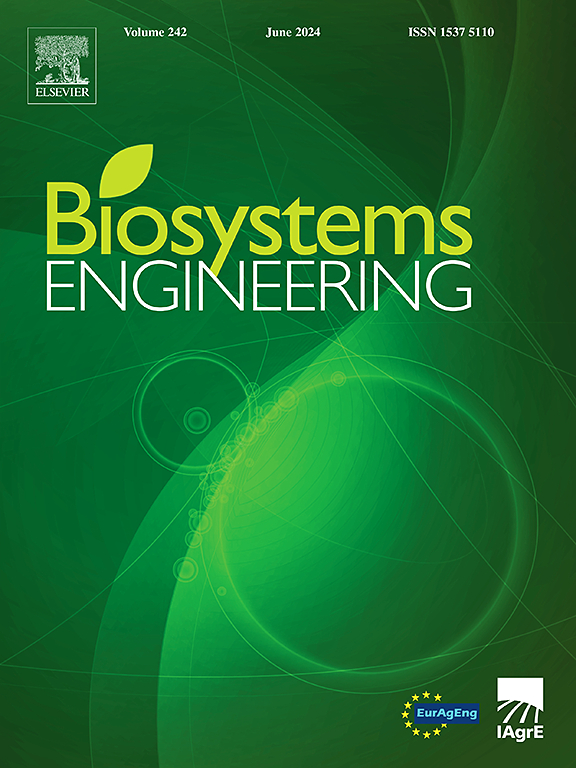A novel framework for developing accurate and explainable leaf nitrogen content estimation model for aquilaria sinensis seedlings using canopy RGB imagery
IF 4.4
1区 农林科学
Q1 AGRICULTURAL ENGINEERING
引用次数: 0
Abstract
Leaf nitrogen content (LNC) is crucial for the cultivation and health management of the endangered tree species Aquilaria sinensis. Although RGB imagery combined with machine learning has been effective for non-destructive LNC estimation, current models often neglect colour index texture features and face feature selection and interpretability challenges. This study introduces a framework to address these issues. Firstly, the canopy RGB imagery colour indices and the texture features of Aquilaria sinensis seedlings were collected as an initial feature set. Then, an improved hybrid feature selection algorithm combining SHapley Additive exPlanation (SHAP) with a dynamic ranking strategy was applied with a regression algorithm. This approach was tested using random forest (RF), support vector regression (SVR), and deep neural network (DNN) models. Optimal feature subsets were identified for each model, and performance comparisons determined the best LNC estimation model. Results show that texture features derived from colour indices significantly enhance LNC estimation accuracy. The dynamic SHAP ranking method outperformed RF and fixed SHAP rankings in feature selection. The optimal model, a DNN with an R2 of 0.946 and RMSE of 1.859 g kg−1 included two colour indices and five colour index texture features. While the normalised red colour index had the highest contribution, texture features contributed more overall to model accuracy. This method can be extended to other biophysical and biochemical parameter estimations.
求助全文
约1分钟内获得全文
求助全文
来源期刊

Biosystems Engineering
农林科学-农业工程
CiteScore
10.60
自引率
7.80%
发文量
239
审稿时长
53 days
期刊介绍:
Biosystems Engineering publishes research in engineering and the physical sciences that represent advances in understanding or modelling of the performance of biological systems for sustainable developments in land use and the environment, agriculture and amenity, bioproduction processes and the food chain. The subject matter of the journal reflects the wide range and interdisciplinary nature of research in engineering for biological systems.
 求助内容:
求助内容: 应助结果提醒方式:
应助结果提醒方式:


